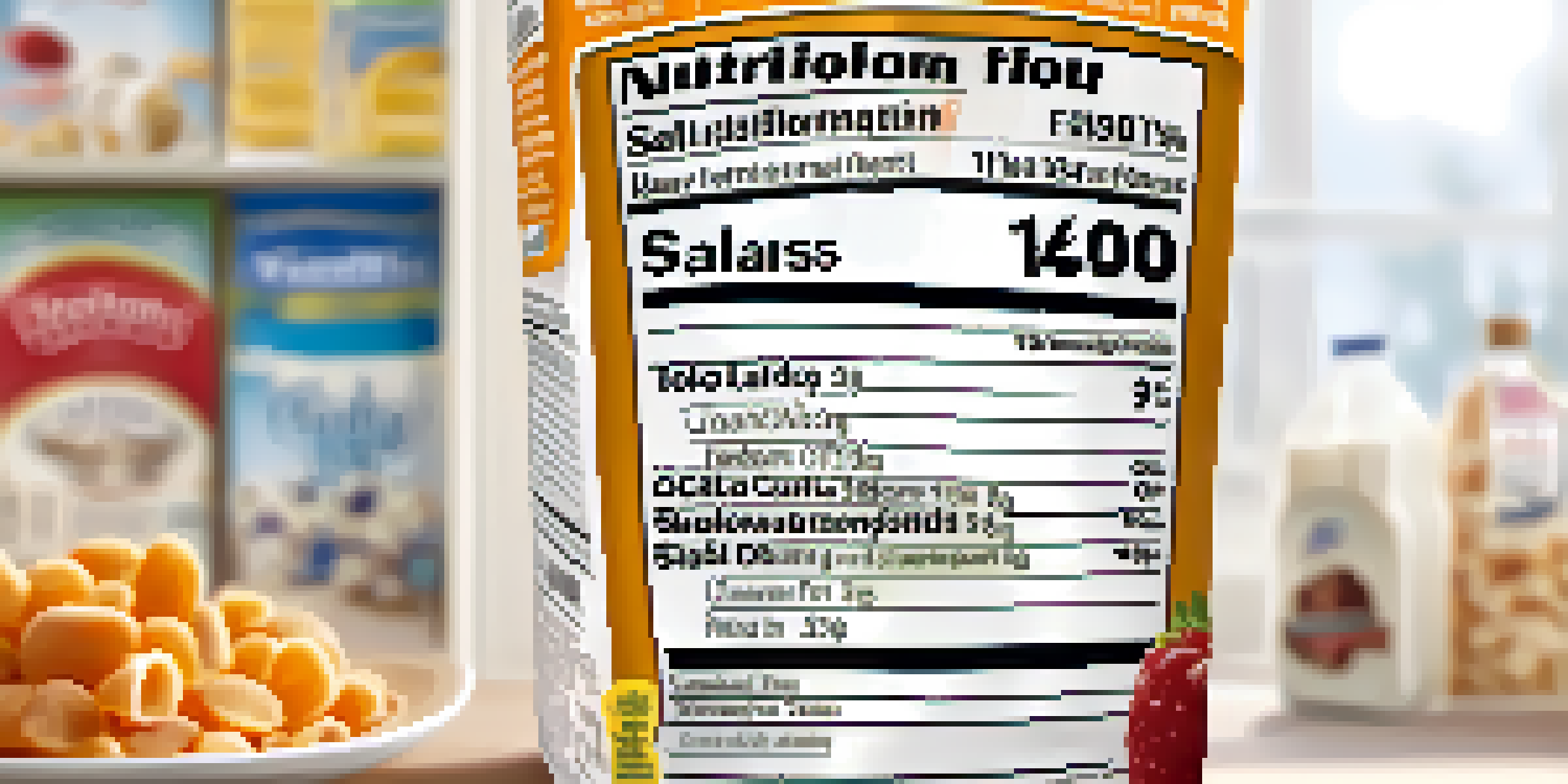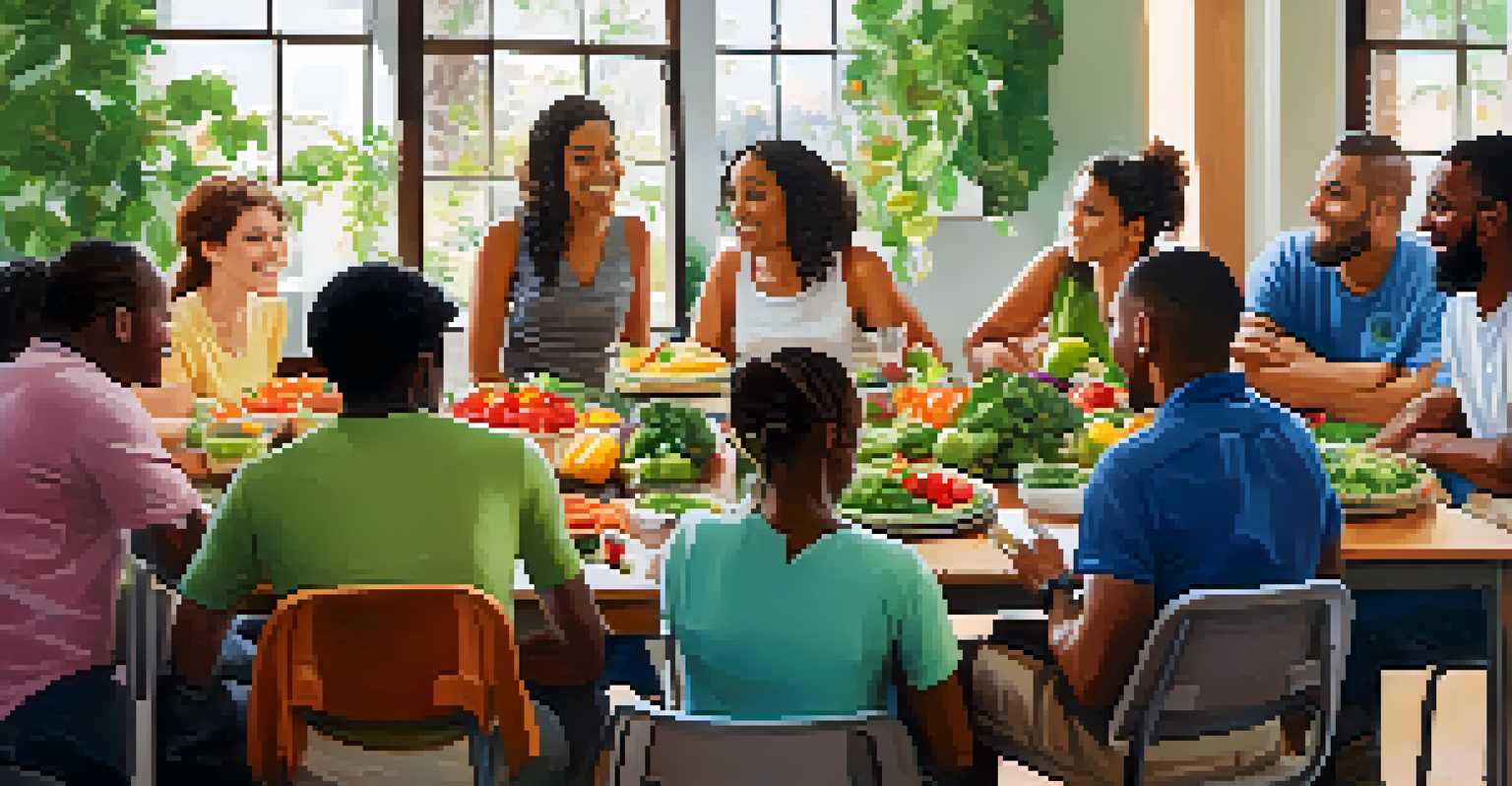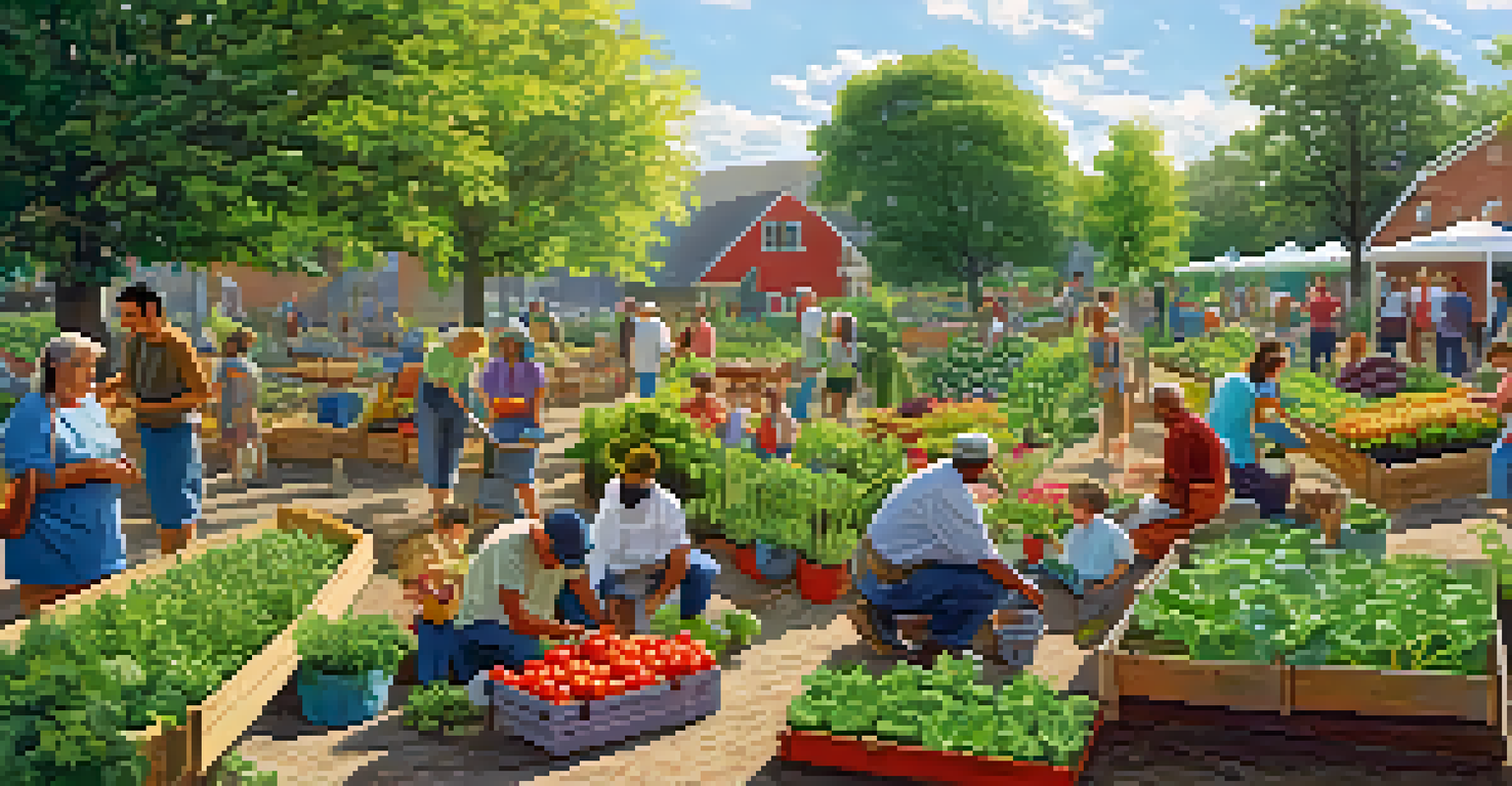Navigating Nutrition: Health Literacy for Better Eating Choices

Understanding Health Literacy and Nutrition Basics
Health literacy refers to our ability to obtain, process, and understand basic health information. It's crucial for making informed decisions about our nutrition. When we comprehend food labels and nutritional guidelines, we can make choices that support our health goals.
Your body is a temple, but only if you treat it as one.
Think of health literacy as a map guiding you through the complex world of food. Without it, navigating can feel overwhelming, much like trying to find your way in an unfamiliar city. By grasping key concepts, you can confidently choose foods that nourish your body.
For example, understanding what 'whole grains' mean or recognizing the importance of fiber can help you select healthier options. This foundational knowledge is the first step in making better eating choices.
The Role of Food Labels in Making Informed Choices
Food labels are your best friends when it comes to understanding what you’re eating. They provide essential information about calories, nutrients, and ingredients, empowering you to make healthier decisions. However, many people find these labels confusing or overwhelming.

Imagine food labels as a treasure map, revealing the hidden gems in your food choices. By learning to read labels carefully, you can quickly identify which products align with your health goals and which ones may not. This knowledge helps you avoid pitfalls like excessive sugar or unhealthy fats.
Health Literacy Guides Food Choices
Understanding health literacy helps individuals navigate nutritional information and make informed choices for better health.
For instance, if you see a cereal that boasts 'high in fiber,' but also check the sugar content, you might find it’s not as healthy as it seems. This critical thinking is a key component of health literacy.
Building Healthy Eating Habits Through Education
Education plays a pivotal role in developing healthy eating habits. By learning about nutrition, you can create a balanced diet that suits your lifestyle and needs. This can include understanding portion sizes, food groups, and the benefits of variety in your diet.
Let food be thy medicine and medicine be thy food.
Think of nutrition education as planting seeds in a garden. Just as seeds need care and attention to grow, so do your eating habits. With the right knowledge, you can cultivate a flourishing relationship with food.
For example, attending a nutrition workshop or reading reliable resources can provide insights into meal planning and cooking techniques. These tools make it easier to incorporate healthier choices into your daily routine.
Overcoming Common Barriers to Healthy Eating
Many people face barriers to healthy eating, such as time constraints, cost, or lack of access to fresh foods. Recognizing these challenges is crucial for finding solutions. For instance, meal prepping can save time during the week and make healthy choices more accessible.
Imagine you're on a tight schedule, and fast food seems like the only option. By preparing meals in advance, you can avoid those last-minute unhealthy choices. This not only saves time but also allows you to enjoy nutritious meals that you love.
Food Labels are Essential Tools
Reading food labels empowers consumers to identify healthy options and avoid excessive sugars and unhealthy fats.
Additionally, exploring local markets or community gardens can help you access fresh produce at lower prices. Finding creative ways to overcome these barriers is part of building your health literacy.
The Impact of Culture on Food Choices
Cultural influences play a significant role in our food choices. Traditional foods and family recipes often shape our eating habits, which can be both beneficial and challenging. Understanding your cultural background can help you appreciate the nutritional value of your meals while making healthier modifications.
Think of your culture as a rich tapestry woven with flavors and traditions. Each thread represents the foods that have been passed down through generations. By embracing these foods and incorporating healthier ingredients, you can honor your heritage while prioritizing your health.
For instance, if your culture values fried foods, consider experimenting with baking or grilling as alternative cooking methods. This way, you can enjoy familiar flavors in a healthier way.
Using Technology to Enhance Health Literacy
Technology has revolutionized the way we access information about nutrition. From apps that track your meals to websites that provide tips on healthy eating, there are countless resources at your fingertips. Embracing technology can significantly enhance your health literacy.
Imagine having a personal nutritionist in your pocket! With the right apps, you can easily scan barcodes, log your food intake, and receive tailored recommendations based on your dietary preferences and goals. This convenience can make healthy eating feel more achievable.
Community Support Enhances Nutrition
Having a supportive community encourages accountability and motivation, making the journey to healthier eating more enjoyable.
Moreover, online courses and webinars offer valuable education on various aspects of nutrition. By leveraging these tools, you can stay informed and motivated to make better food choices.
The Importance of Community Support in Nutrition
Community support can make a world of difference in your journey toward healthier eating. Whether through local groups, social media, or family and friends, having a support system encourages accountability and motivation. Sharing successes and challenges can foster a sense of belonging.
Think of your community as a cheerleading squad on your health journey. They can provide encouragement when you’re feeling tempted to stray from your goals. This support can make the process feel less isolating.

For example, joining a cooking class with friends or participating in a community garden can enhance your understanding of nutrition while building connections. Together, you can celebrate progress and share healthy recipes!